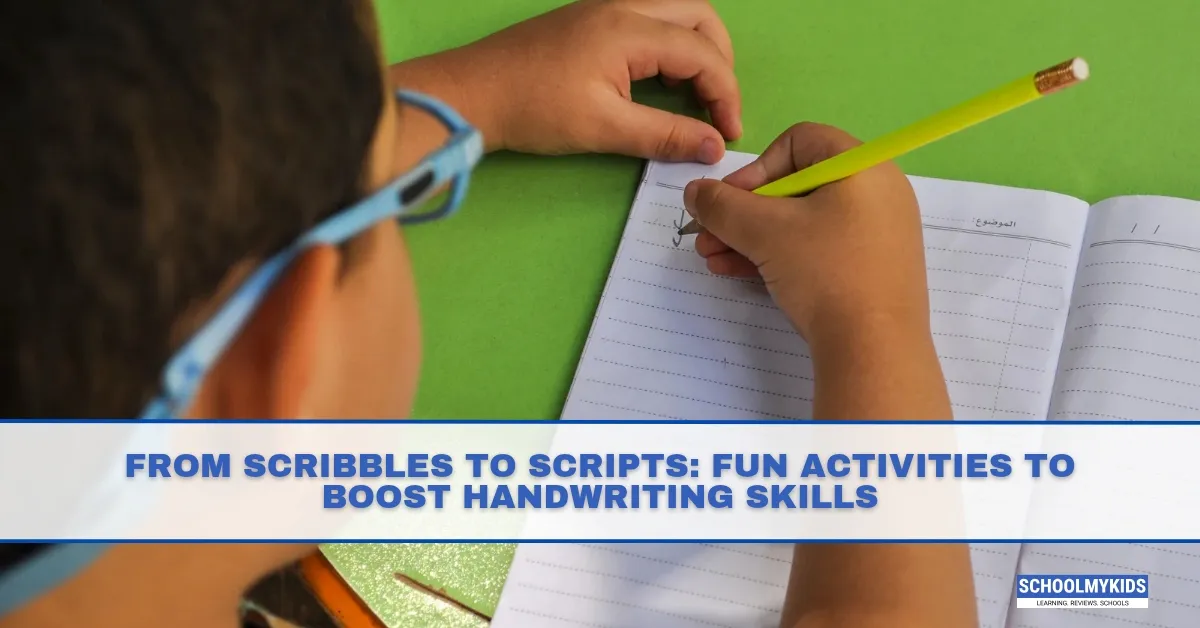In today's digital world, where kids are swiping screens before they can tie their shoelaces, handwriting skills might seem like a relic from another era. But guess what? Handwriting is still super important! It helps develop fine motor skills, improves memory, and boosts academic performance. Plus, there's something special about receiving a handwritten note that no text message can replace.
If you've noticed your child's handwriting looking more like ancient hieroglyphics than actual letters, don't worry! Here are some fun, engaging activities that will help improve their penmanship without them even realizing they're practicing.
1. The Sensory Writing Tray
Kids love getting messy, so why not use it to your advantage?
What you'll need:
- A shallow tray or baking dish
- Sand, salt, shaving cream, or even pudding!
- A popsicle stick or their finger
How to play: Fill the tray with your chosen material and let your child practice tracing letters or words. The tactile feedback helps reinforce muscle memory while feeling like play rather than practice. When they're done, simply smooth it over and start again!
2. Letter Treasure Hunt
Transform your home into an adventure playground where handwriting is the key to finding treasure.
What you'll need:
- Small index cards
- Pen or marker
- Small prizes or treats
How to play: Write clues on index cards, each with a handwriting challenge (like "write your name in bubble letters" or "copy this sentence in your best handwriting"). Each completed card leads to the next clue, with a small prize at the end. The excitement of the hunt makes the handwriting practice feel incidental!
3. Digital-Physical Hybrid: Handwriting Apps with Stylus
Even tech can help with handwriting! Many modern tablets support stylus pens that give a more authentic writing experience.
What you'll need:
- Tablet with a child-friendly stylus
- Handwriting apps like "Letter School," "Writing Wizard," or "Handwriting Without Tears."
How to play: These apps often gamify the handwriting experience with animations, sounds, and rewards. The beauty is that kids can practice repeatedly without wasting paper, and many apps provide instant feedback on form and technique.
4. Story Chain Letter Game
This collaborative game is perfect for family game nights or playdates.
What you'll need:
- Paper
- Different colored pens
- Timer (optional)
How to play: Each person writes one sentence of a story in their best handwriting, then folds the paper so only the last line shows. The next person continues the story based on that line. When everyone has had a turn, unfold and read the silly story aloud! You can gently point out examples of particularly clear handwriting.
5. DIY Handwriting Journals
Kids love having something that's entirely their own.
What you'll need:
- A blank journal or notebook
- Decorating supplies (stickers, markers, etc.)
- Writing prompts
How to play: Let your child decorate their very own writing journal. Each day, give them an engaging prompt like "If you could have any superpower..." or "The funniest thing that happened today..." Even reluctant writers often enjoy journaling when the topics interest them.
6. Handwritten Recipe Book
This activity combines handwriting practice with life skills and creates a meaningful keepsake.
What you'll need:
- A blank notebook or binder with paper
- Photos of finished dishes (optional)
- Family recipes
How to play: Have your child help create a family recipe collection by handwriting favorite recipes. Younger children can start with simple recipes, while older ones can tackle more complex ones. As a bonus, you'll be cooking together and passing down family traditions!
7. Pen Pal Program
In our instant messaging world, there's something magical about receiving actual mail.
What you'll need:
- Stationery or paper
- Envelopes and stamps
- A willing pen pal (grandparent, cousin, friend who moved away)
How to play: Set up a regular pen pal exchange. The excitement of receiving a letter provides natural motivation to write back. Start with simple exchanges for younger children and encourage longer letters as skills improve.
Conclusion
Remember, the key to improving handwriting isn't endless drills or frustrated tears—it's making the practice enjoyable enough that kids want to do it regularly. Mix up these activities to keep things fresh, and don't forget to celebrate improvements, no matter how small!
And if your child struggles persistently with handwriting despite regular practice, consider consulting with an occupational therapist who specializes in pediatric development. Sometimes handwriting difficulties can signal issues like dysgraphia that benefit from professional support.








Be the first one to comment on this story.